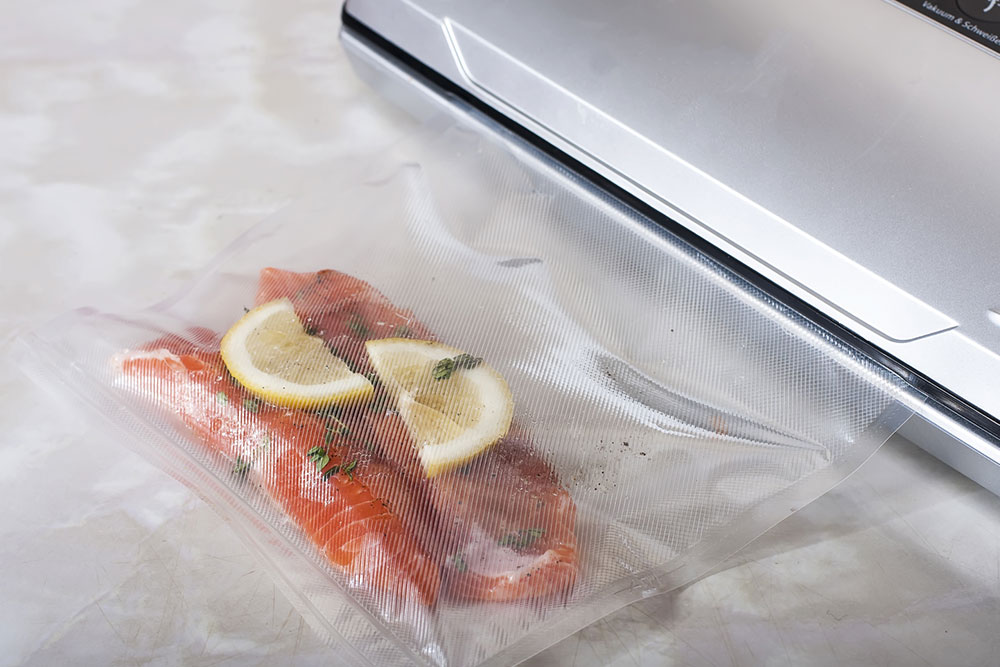Guide to vacuum sealing food – 8 tips to keep in mind

Food vacuum sealing is a great way to help preserve food and keep it fresh for longer. Vacuum sealing also helps keep it flavourful for a more extended period. Some of these foods can stay fresh for weeks or even months, so storing huge quantities of seasonal produce in vacuum bags is a beneficial hack. Here are some tips and tricks to help get the most out of food vacuum sealing.
Here are some tips to keep in mind when using food vacuum sealers:
- Label the bags
This helps keep everything organized and easy to spot in the freezer. Many vacuum sealer bags come with their label, so you can easily write down the food contents on the label. It is also essential to write down the date of when it was sealed, the quantity, and any other information necessary. One can even write down the expiry date so it’s consumed before it goes bad. - Fill appropriately
Overfilling the bag is a mistake, so one should always be careful of the food quantity. It is vital to always keep two to three inches of gap between the food and the seal area. This ensures the contents have been properly sealed and no air is left in the gaps. - Freeze meat
One handy trick to vacuum sealing meats is to always freeze them beforehand. Bacteria, which are present in the environment, can harbor in the meat. Once it is frozen, though, the growth of the bacteria halts, making it safe to eat later. Another benefit of this method is that freezing ensures all the juice from the meat remains preserved. This means that when one is ready to open the seal and cook the meat, it will taste just as delicious. - Clean the food
Before sealing anything, make sure that the contents of the bag are hygienic and clean–not just the contents but even the bag. Wash it thoroughly to remove dirt or debris, especially from the seal line. Thoroughly wash and clean the fruits and vegetables before putting them in the vacuum seal bag, and one can even peel the vegetables to be extra safe. - Use oxygen absorbers
Oxygen gives life to everything, so it is also responsible for oxidation, leading to food getting spoiled. Using oxygen absorbers is a neat trick to ensure no oxygen around the food to allow for any decomposition. Little packets are easily available and help absorb the air around the food. This trick can help keep the food fresh for longer. Also, while sealing, if there are gaps, absorbers help to suck air out, making it very convenient to prevent the food from going rancid. - Cover sharp edges
To prevent the sharp edges of a particular food from tearing the sealed bag, one should cover them. One can use wax paper as a protective layer to keep food from tearing the bag. - Freeze liquids
When sealing liquids, the trick is to freeze them before sealing. Smoothies, soups, or anything else with a good amount of water content is hard to seal directly in the bag, as they can expand. They are also likely to make a mess. So always freeze these liquids before sealing them into a bag. This process only takes a couple of extra hours and saves one from creating a mess in the storage space. The food tastes just the same, and the flavor is not lost in the freezing process. - Arrange the food properly
Being mindful of arranging the food inside the bag is also very important. Just haphazardly throwing food can tear the bag or reduce its shelf life. When packing food in vacuum bags, keeping them as flat as possible is essential to allow the vacuum sealer machine to work efficiently and remove all the air from inside. Any gaps left will lead to decaying of the food.
While foods remain fresh and nutritious in the vacuum sealer for a long time, they are perishable items with an expiry date. Always plan and ensure that food is eaten and enjoyed at the right time so it does not go to waste. Different product storage guides exist, so always check out instructions or research roughly before storing foods in vacuum bags. Beef and poultry, fish, soups and stews, vegetables, bread, and coffee beans all have one kind of shelf life.
Additionally, if one is reusing silicone vacuum bags, one must allocate different bags for each type of produce. Ideally, a different bag should be allocated for raw chicken and reused next time for storing chicken only, not some other meat type. Raw meat usually has some sort of bacteria, like salmonella, which can cross-contaminate other food products.
It is recommended to avoid using single use plastic vacuum bags and use reusable vacuum bags made from silicone. These are sustainable, durable, and will likely last one for multiple years. They come in various sizes, are easy to use, and are highly resistant to extreme temperature changes.





